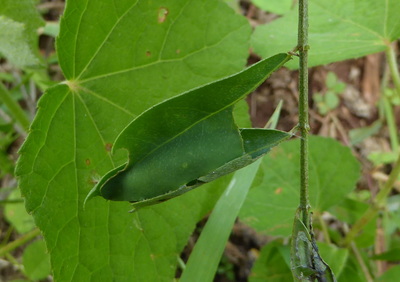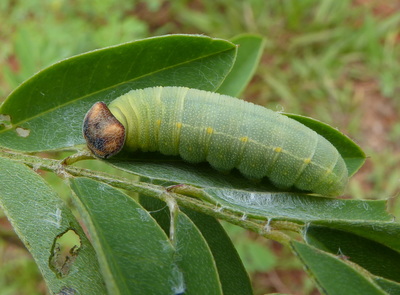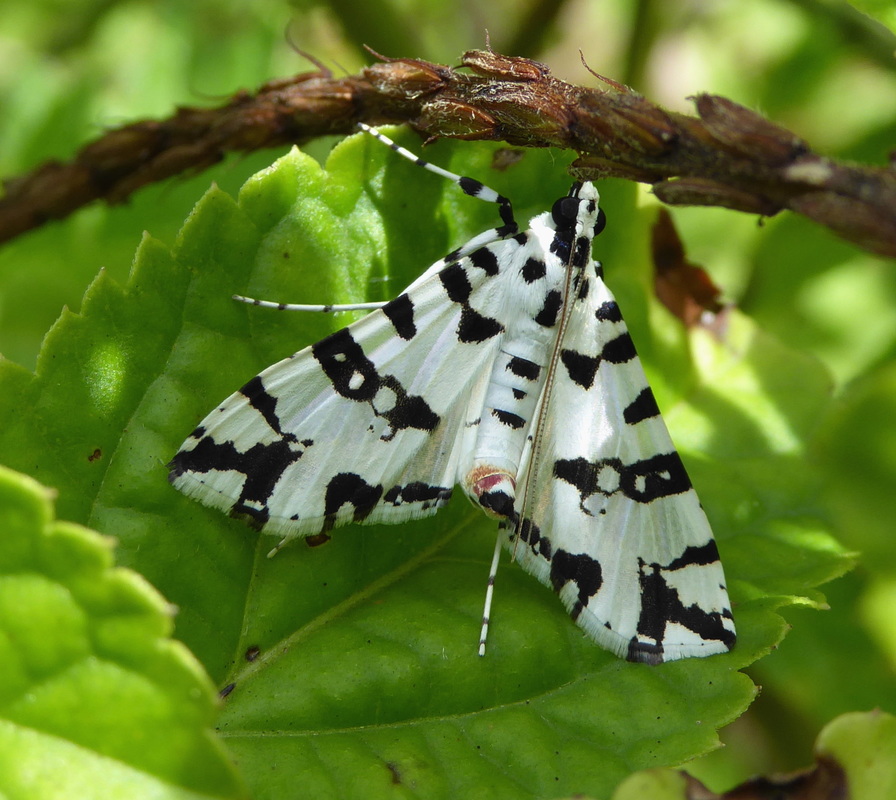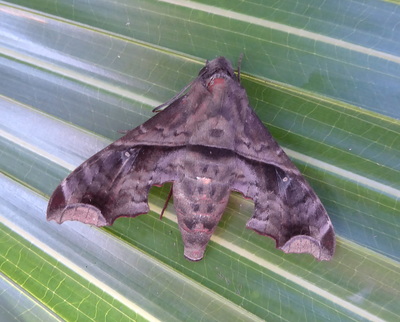One of the exciting finds on the first day was of two skipper larvae within a leaf shelter. Rayner didn’t recognise them though later worked out that they were likely to be Erynnis zarucco Zarucco Duskywing – this later proved to be the case when the adults emerged. This wasn’t a species that we had come across before on our winter visits though it is said to be widespread and common so either the status has changed or perhaps it only flies during the summer.
|
Our flight to Habana with Virgin Atlantic was on time and after the usual delay at the airport waiting for the luggage to be off-loaded (never a good first impression for those arriving in Cuba for the first time) we met our driver Duviel and transferred to the Hotel Parque Central in the centre of Habana where we were greeted with the news that we had been upgraded to the Presidential Suite! Now this is Habana not London but it was still a very spacious and comfortable room with separate changing rooms and large en-suite. It over-looked a large tree-covered park and in the morning we watched Grey Kingbird, American Kestrel, Cuban Martin and even Cuban Emerald from the balcony. A walk in the forest the next day produced the third record for Cuba of Eastern Tailed-Blue Cupido comyntas - until it was taken by a wasp that is! The discovery of this species has just been written up in the Journal of the Lepidopterists’ Society 69(2), 2015, 142 –143 and describes the finding of two males (at this same site) on 4 July 2014. Our individual was also a male so a female has yet to be found on Cuba. In the morning Duviel returned, with our guide Rayner, to collect us and we drove on to Vinales and checked in to the Los Jazmines Hotel with its wonderful view over the valley. We had been told that the food wasn’t great here at the hotel but after eating out for a couple of nights at local restaurants we found that, contrary to what we had been told, the service and the food here was better. Our first two days were spent exploring the fields and edges of the mogotes around Vinales. Mogote is the name for the distinctive limestone outcrops that are dotted through the landscape around Vinales. In the first couple of hours we had seen five species of Swallowtail including this Bahaman Swallowtail Heraclides andraemon though our sightings of Cuban Kite Swallowtail Eurytides celadon were very unsatisfactory as this is a fast-flying species that rarely seems to stop and consequently seems to have been rarely photographed. It was therefore high on our target list to get good pictures. We also saw a few larvae of Oviedo’s Swallowtail Heraclides oviedo with more than a passing resemblance to a wet and slimy bird dropping. We also disturbed several of the pyralid moth Conchylodes diphteralis. The distinctive song of Cuban Solitaire was common around the vertical walls of the mogotes and it was here close to the limestone face that we saw our first Calisto aquilum. All the eleven Calisto species in Cuba are endemic to the island and Rayner is the person who has carried out the detailed morphological research and arranged and analysed the DNA results to show the true status. One of the exciting finds on the first day was of two skipper larvae within a leaf shelter. Rayner didn’t recognise them though later worked out that they were likely to be Erynnis zarucco Zarucco Duskywing – this later proved to be the case when the adults emerged. This wasn’t a species that we had come across before on our winter visits though it is said to be widespread and common so either the status has changed or perhaps it only flies during the summer. Further along the path a strange noise alerted us to the plight of a frog that had been caught by a small Dusky Dwarf Boa Tropidophis melanurus. The frog had been grabbed by a back leg and the boa then wrapped its coils around its hapless prey to subdue it. The frog’s defence of pumping itself up was to no avail and half an hour later the snake had transferred its bite to the head and was in the process of devouring it. I thought the tail of the snake was interesting – it looks like a worm and perhaps this is used to trick its prey into coming into range. This is a non-venemous snake that is also known as the Giant Trope or Cuban Wood Snake. We also saw several superb anoles (lizards) and photographed a very obliging Cuban Snout Libytheana motya. In the afternoon Rayner and I walked to the base of another mogote where he had previously found Calisto bradleyi some years previously and it is good to report that it still occurs there. Note the small blue scales in the black spot at the anal angle of the hindwing. It is currently known only from this 150m stretch of narrow tree cover where it is found only within about 20m of the base of the rock face. It is known only from one other specimen found higher up on another mogote. On the way back there was a Eufala Skipper Lerodea eufala sitting on the track. A short walk near the hotel in the evening produced Ceraunus Blue Hemiargus ceraunus and Limenia Scrub-Hairstreak Strymon limenia while we also found a couple of moths attracted to the hotel lights. 59 species of Hawk-moth (Sphinx in the Americas) have been recorded on Cuba and this one, the Mournful Sphinx Enyo lugubris, is widespread throughout Southern and Central America, the Caribbean and the southern states of North America. The other is Cosmosoma auge, a member of the Sub-Family Arctiinae and has a very similar distribution.
1 Comment
7/8/2018 09:12:57 pm
Do you have a list of the butterfly species that are found both in Cuba and Florida?
Reply
Leave a Reply. |
Welcome to our Blog
Here we will post interesting news about what we and others have seen in Cuba. Archives
July 2024
Categories |






















 RSS Feed
RSS Feed